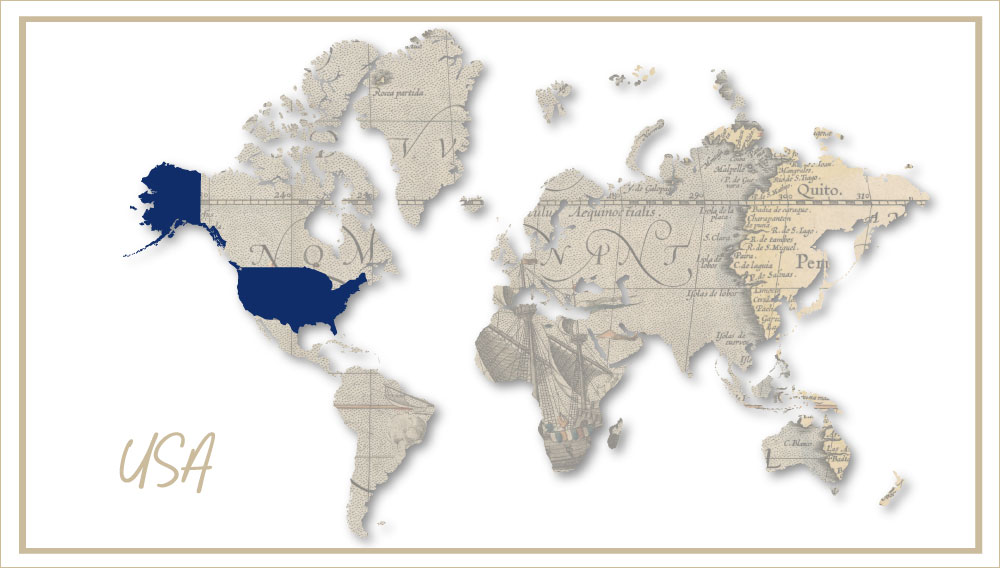Oregon’s craft breweries: when is many too many?
USA – Praise where praise is due. Craft brewers saw their number and their sales rise last year. In a beer market that declined overall by 1 percent, craft beer continued to grow, with barrel output up 4 percent over 2017 to reach 26 million barrels (30.5 million hl).
Throw in the craft breweries, which were bought by the Big Brewers, and craft beer consumption was even higher, by an estimated 9 million barrels (10.5 million hl). Much of that growth can be attributed to the 1,049 breweries, which opened in 2018.
But this growth has come at a price: heightened competition. Craft brewers are not just fighting the Big Brewers, they are increasingly at each other’s throats too. Oregon is no exception here. The state in the Pacific Northwest has 3.2 million inhabitants and nearly 300 breweries, with about 120 in the Portland area alone. The city of Bend, 260 km to the southeast of Portland, has 30 craft breweries for a population of 120,000 people. Compared with other US states, Oregon’s craft brewers enjoy the highest beer market share. Craft beer is 45 percent of local beer sales.
A shake-out among craft brewers seems imminent. In the past year, says The Oregonian, a newspaper, Portland’s once-beloved BridgePort brewery, shuttered. Portland Brewing’s and Widmer’s once-packed restaurants closed. Alameda Brewhouse and Burnside Brewing are history. Gary Fish, the founder of Oregon’s largest craft brewery Deschutes, which opened three decades ago in Bend, recently told The Oregonian: “With this many breweries, there’s not enough market, enough consumer purchase to sustain them all.” He added: “We used to kind of ‘own the market’ in Bend. That’s no longer true. We’re fighting alongside all these little, tiny breweries.”
Given that so many new breweries have cropped up, customer loyalty has been on the wane. Of course, brewers have long complained about fickle consumers and diminishing customer loyalty once beer markets turned mature. But the boom in craft brewery openings has turned fickleness into a new sport: “chase the latest new beer.” Kendall Jones, a US beer blogger, has termed this sport the Pokémonification of craft beer, named after game Pokémon GO, which saw large crowds of people across the globe chase virtual objects (cute, cartoonish Pokémon creatures) on an actual city map when it was launched in 2016.
As consumers began to hunt down the most obscure beer and the newest taproom, they gave traditional beer bars a wide berth and increasingly ditched legacy craft beer brands in favour of weird concoctions. Ironically, the Pokémonification of beer consumption has seemingly made punters’ memory shrink to the memory span of a goldfish, which is seconds. When AB-InBev bought the Bend craft brewer 10 Barrel in 2014, there was such an outrage that observers began to fear for 10 Barrel’s commercial future in Bend. However, visit 10 Barrel today and everybody seems to be drinking beer on its rooftop. Mind you, the shift towards localism has made AB-InBev ditch its original plan for a national roll-out of 50 branded 10 Barrel brewpubs.
How have legacy craft brewers – those that have been around for 20 years or more – responded to the challenges? There has been much talk about them suffering from the blues. However, when I spoke with Deschutes’ CEO Michael LaLonde in April, he seemed sanguine about these developments. He pointed out that without its craft beer life-style, Bend would still be a depressed logging town of 20,000 people, as it was when Deschutes was set up, and not the popular destination for business start-ups, retirees and tourists that it is today.
The privately- and employee-owned Deschutes, which distributes its beers to about 30 states and Canada, ranks as the 10th largest craft brewer in the country. True, it has seen a decline in sales in recent years. In 2016, output peaked at 440,000 hl beer, dropping to 375,000 hl in 2018. It had to lay off 10 percent of its workforce last year because of a miscalculated expansion that never materialised. What is more, it cancelled schemes to build a 220,000 hl brewery on the East Coast. But Mr LaLonde does not blame his local competitors for Deschutes’ current struggles. There are a host of reasons. As he said, you cannot have a strong local movement without swings in consumer traffic between craft breweries. No doubt, Deschutes on-premise sales have suffered as punters seek out taprooms. And, of course, cannabis consumption has eaten into people’s discretionary spending. Oregon legalised recreational cannabis in 2014 and 30 pot shops have since opened in Bend alone.
In order to attract the experience-seeking beer curious, Deschutes will focus on product innovation, using its six brewhouses to churn out more one-of experimental beers. It thus hopes to stem the output decline. So far, the strategy seems to be working. Its bar and taproom in Bend still draw the crowds and prove profitable.
So when is many too many? Mr LaLonde thinks that breweries will continue to come on the market for as long as banks will provide the loans. Only when brewery closures exceed the number of openings and this fact hits the news, will the funding dry up and people will need to rethink their professional futures.
Judging from the excitement around beer in Bend, this could be some time away.
Oregon’s leading breweries
Number of barrels beer sold in Oregon in 2018
- Deschutes Brewery: 66,186
- Widmer Brothers Brewing: 58,773
- Hop Valley Brewing: 50,392
- Ninkasi Brewing: 50,227
- 10 Barrel Brewing: 48,794
- Pelican Brewing: 25,255
- Boneyard Beer: 24,928
- Full Sail Brewing: 22,505
- Portland Brewing: 21,804
- Breakside Brewery: 20,348
Source: The Oregonian
Authors
Ina Verstl
Source
BRAUWELT International 2019

